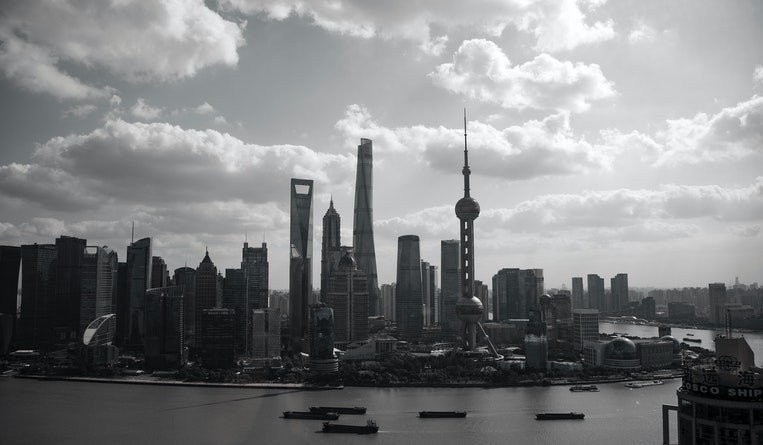The judiciary in China has been researching and exploring, over the years, the indemnity regime of intellectual property cases, as well as unfair competition cases. Article 63 of Trademark Law provide rules describing how to calculate and prove the amount of damages to be awarded by the Court. The laws also provide for a limit below which the Court may award damages, where proof is difficult (statutory damages) to furnish. Some cases have even shown circumstances where, in absence of precise calculations but having preponderant proof, the courts have awarded damages beyond the statutory limit (discretionary damages). And finally, the concept of punitive damages, was introduced in the third amendment of the Trademark Law in 2013.The distinction between discretionary damages and punitive damages can be easily confusing.
1. Legal basis
Article 63(1) of the Trademark Law describes how to calculate the amount of damages related to an act of infringement of trademark rights, that is, (1) the actual losses suffered by the right owner; (2) in case that the actual losses are difficult to ascertain, the infringer’s illicit profits yielded from the infringement; or (3) in case that the losses of the right owner or the illicit profits of the infringer are difficult to ascertain, a reference to a trademark license fee. The article also provides for punitive damages in cases of “malicious” infringement “in serious cases”: in such case, the amount of damages can be up to five times of the amount resulting from the calculation rules.
Besides, in case that the actual losses, the infringer’s profit, and the reference to a license fee are difficult to determine, article 63.3 provides that the court may, according to the circumstances of the infringement, award a judgment of not more than RMB 5 million (last limit fixed in the 2019 revision of the law). In practice, brand owners often find it difficult to prove actual losses, illegal gains and license fees in civil proceedings. As a result, courts tend to rely heavily on statutory damages in determining the amount of indemnity.
However, there are cases where, even though the evidence proving the accurate prejudice or gains is insufficient, the court finds from these evidence that the damage must be higher than the statutory limit. In such cases, the court allows itself to award a discretionary amount above the statutory limit. In the 3M v. Huawei (3N)case, the court awarded damages RMB 3.5 million, which exceeded the statutory damages of RMB 500,000 as set forth in 2001 Trademark Law. The court considered the scale of the defendant’s infringement, the maliciousness of the infringement, the profit margin of the infringing product, the defendant’s intentional obstruction of proof and the popularity of the plaintiff’s trademark and trade name.
However, the application of discretionary damages over the statutory damages limit has created confusion.
2. Discretionary damages
The principle of full compensation is found in the Tort Law and is followed by the judiciary when ascertaining damages in trademark infringement cases. The principle is explicitly affirmed by Beijing High Court IP Tribunal in the first chapter (Article 1.1) of its newly issued Guidelines on Damages and Criteria on Statutory Compensation for Cases Concerning IP Infringement and Unfair Competition (hereafter the “Guidelines”; April 2020). Such principle allows the injured party to be entitled to full compensation for the harm it has sustained as a result of the tortious act like trademark infringement. Therefore, technically speaking, the calculation of damages by utilizing parameters other than the "actual loss" suffered by the brand owner as specified in Article 63(1) of the Trademark Law, could be considered irrelevant to the strict compensation of the prejudice and rather be taken as a basis for punitive damages.
China’s Supreme People’s Court (SPC) promulgated, on April 21, 2009, a policy document "Opinions on Several Issues Concerning Leveraging Intellectual Property Trial to Serve the Overall Interests in the Context of the Current Economic Situation", which explains in Article 16 the parameters and legal merits of awarding damages exceeding the ceiling of statutory damages. The SPC urges courts at all levels to "…employ preponderance of the evidence in the determination of damages. Courts are obligated to encourage the parties to calculate damages by resorting to losses incurred or profit yielded from infringement, rather than arbitrarily opting to statutory damages. Where it is difficult to prove the exact damages suffered from or profits yielded from the infringement, yet there is evidence proving that the aforesaid amount obviously exceeds the highest statutory damages, damages should be ascertained and set above the highest statutory damages by taking into account all the evidence…."
In other words, the SPC agreed that evidence of prejudice does not have to be a pure calculation strictly based on account books, but can also, in addition, be estimated on the basis of the overall facts of the case.
Mr. Kong Xiangjun, the then Presiding Judge of SPC’s Intellectual Property Tribunal made it clear in one of his essays entitled Protecting Innovation with Innovative Thoughts – Reflections on Current Intellectual Property Judicial Practice (September 2013): “…Given the difficulty in fulfilling the burden of proof in intellectual property disputes, the harm corroborated by evidence is usually less than that sustained by the injured party. It is therefore necessary to strengthen the application of discretionary damages… For instance, where facts and evidence are able to prove that the actual losses exceeds the statutory damages, but the actual losses is indeed difficult to prove precisely, Court may exercise discretion and determine an amount of damages above the maximum statutory damages. Such discretionary damages is not statutory damages and shall be distinguished from the application of statutory damages, instead it still falls under the determination of actual losses, only that it is based on facts, evidence as well as discretional evaluation of evidence..."
The Guidelines reiterate the view in Article 1.8, which reads “The discretionary damages, which cannot be equated with statutory damages, is the summarization and calculation of the brand owner’s actual losses or infringer’s illegal gains. Where evidence could prove that the brand owner’s actual losses or infringer’s illegal gains obviously exceeds the limit of statutory damages, Court may take into account the entirety of evidence and award reasonable damages above such limit”.
In light of above, discretionary damages exceeding the maximum statutory damages relies heavily on the evidence adduced by the parties in respect of losses or illegal gains, with the first paragraph of Article 63 of the Trademark Law serving as the legal basis of its application.
3. Punitive damages
Contrary to the regular damages, or statutory damages or even discretionary damages, punitive damages are not assessed in consideration of the prejudice suffered by the brand owner. They are decided more in consideration of the behavior of the infringer.
Since the entry-into-force of the 2013 Trademark Law, trademark owners have claimed, in many occasions, punitive damages, but to no avail. Courts’ reluctance in applying punitive damages primarily lies in the high threshold in the determination of "malicious infringement of the exclusive right to use a trademark, where the circumstances is serious". The Guidelines attempt to expatiate on the prerequisite for awarding punitive damages in Article 1.13: “Punitive damages shall be awarded in accordance with laws. Punitive damages is applicable, provided that acts amounting to trademark infringement or trade secret infringement are conducted in bad faith and that the case is serious. The infringer’s direct intent (of bringing about the prohibited consequence as his primary aim) is generally deemed as the proof of ‘bad faith’ and where ‘the case is serious’ usually means the litigious act has caused severe injurious consequences”.
Before the promulgation of the Guidelines, there are several influential cases that applied punitive damages. In the case of trademark infringement disputes between Deere Company and John Deere (Beijing) Agricultural Machinery Co., Ltd., the court applied “punitive damages” based on the defendant’s history of administrative punishment, various ways of infringement and the scale of infringement. The appeal court, the Beijing High Court held that the defendant continued engaging in bad-faith infringement even after being imposed administrative punishment, and that the manifold infringement behavior and the large scale of the infringement demonstrates that the defendant is engaged in fully fledged trademark infringement and unfair competition act. The court therefore found that the defendant's behavior falls under the circumstances warranting punitive damages and awarded damages three-fold the profit gained by the accused infringer. Since the amount of calculated damages has far exceeded the plaintiff’s claim of RMB 5 million, the court finally fully supported the plaintiff’s claim.
The John Deere case demonstrates the very high standard in the application of punitive damages. Brand owners need to prove 1) the actual losses, illicit profits or license fees, 2) the bad faith of the infringer and 3) the serious consequences of the infringement, in order to secure a punitive damages.
4. Conclusion
Actually, the aim for punitive damages can, sometimes, be an illusion. The reason is that, according to the law, they are established as a multiple of the actual damages calculated pursuant to article 63.1 of the law. Therefore, if the accounting books cannot prove high amounts, the result will be that even if multiplied up to five times in order to become punitive, the final result might be less than what the court could decide in its discretionary assessment. The most important is to convince the courts based on all the circumstances of the case that the award should be beyond the maximum statutory damages. And, the Beijing High Court makes it clear in the Guidelines (Article 1.14) that “Punitive damages shall be applied pursuant to the claims of the parties. Such claim, in general, shall be put forward before the end of first instance court debate”.
Authored by Cindy Shu Qi Zhen , Partner, Wanhuida Intellectual Property







